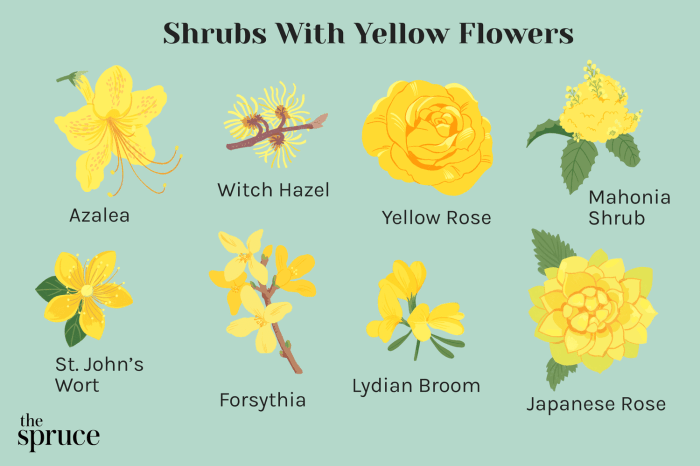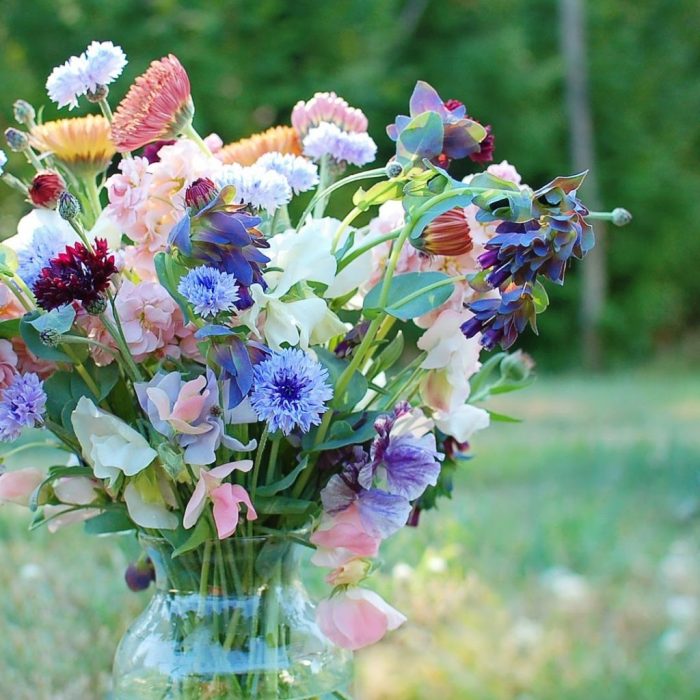Identifying Potential Plants: Tall Green Plant With Yellow Flowers

Tall green plant with yellow flowers – Tall green plants with yellow flowers are a diverse group, encompassing various species with differing growth habits and environmental needs. Identifying a specific plant requires considering factors such as height, leaf shape, flower structure, and geographical location. This section will explore several examples of such plants, highlighting their characteristics to aid in identification.
Several tall plants boast vibrant yellow flowers, each with unique attributes. Understanding these differences can help in accurate identification. The following examples illustrate the variety within this plant group.
Descriptions of Tall Yellow-Flowered Plants
Below is a list of five tall green plants commonly known for their yellow flowers, along with details on their growth habits and environmental preferences. Note that the specifics can vary based on cultivar and growing conditions.
- Rudbeckia maxima (Giant coneflower): This plant can reach heights of 6-8 feet, featuring large, daisy-like yellow flowers with dark brown centers. It thrives in full sun and well-drained soil, tolerating dry conditions once established. The petals are long and slightly drooping, arranged radially around a prominent central cone.
- Helianthus annuus (Common sunflower): A familiar sight, sunflowers can grow to impressive heights, sometimes exceeding 10 feet. Their large, single, yellow flower heads are iconic, featuring numerous ray florets surrounding a central disk of smaller florets. Sunflowers prefer full sun and fertile, well-drained soil, and are relatively drought-tolerant.
- Solidago gigantea (Giant goldenrod): This robust perennial reaches heights of 3-8 feet, producing numerous small, yellow flowers clustered in dense panicles. It thrives in moist to wet soils and prefers full sun to partial shade. The individual florets are tiny and numerous, creating a dense, plume-like effect.
- Verbascum thapsus (Common mullein): This biennial can grow quite tall, reaching 2-6 feet. It boasts tall, dense spikes of small, yellow flowers, with five petals fused at the base. It prefers dry, well-drained soil and full sun, often colonizing disturbed areas. The flower structure is relatively simple compared to other examples.
- Lupinus arboreus (Tree lupine): A shrubby perennial, it can grow to 6-10 feet tall, with dense clusters of pea-like yellow flowers. It prefers well-drained soil and full sun, often found in coastal areas. The flowers are arranged in racemes, with individual flowers having a characteristic pea-like structure.
Flower Structure Comparisons
The flower structures of these plants vary significantly. While all exhibit yellow coloration, petal arrangement, size, and overall flower shape differ considerably. This variation aids in distinguishing between species.
For instance, the sunflower’s large, single flower head contrasts sharply with the numerous small flowers clustered in panicles on the giant goldenrod. The individual flower structure of the lupine, with its pea-like shape, is also distinct from the daisy-like flowers of the giant coneflower. Even the simple, five-petaled flowers of the mullein offer a different visual characteristic. These differences in flower morphology are crucial for accurate plant identification.
Imagine a tall green plant, its vibrant yellow flowers reaching for the sun, a beacon of natural joy. This reminds us of the simple beauty found in nature, much like the delicate blossoms of the lemon balm plant flowers , which also offer a calming, uplifting fragrance. Reflect on the quiet strength of this tall green plant, a symbol of resilience and the beauty of unassuming growth.
Visual Description and Characteristics

Imagine a tall, slender plant, reaching perhaps five to ten feet in height, depending on the species and growing conditions. Its overall appearance is one of graceful verticality, punctuated by bright bursts of yellow. This description encompasses a range of plants, so specifics will vary.The stem is typically smooth or slightly rough to the touch, often green but sometimes tinged with other colors like reddish-brown, especially near the base.
Leaves are generally elongated and lanceolate (lance-shaped), exhibiting varying degrees of serration (toothed edges) or smoothness along their margins. They are arranged alternately along the stem, creating a pleasing, slightly feathery effect. The leaves themselves are usually a vibrant green, though some varieties might show a slightly paler or bluish-green hue.
Detailed Plant Characteristics
The yellow flowers, the plant’s most striking feature, can appear in various arrangements. Some plants might boast large, solitary blooms at the tip of each stem, while others may feature smaller flowers clustered together in dense, terminal inflorescences (flower clusters at the end of a stem). The individual flowers themselves could be simple, with five or more petals, or more complex, with multiple layers of petals creating a fuller, more showy bloom.
The texture of the petals might range from delicate and papery to thicker and more substantial. The overall effect is a vibrant display of sunshine-yellow, brightening up any garden or landscape.
Examples of Tall Yellow-Flowered Plants
The following table provides examples of plants that fit the general description of a tall green plant with yellow flowers, highlighting the variability within this category.
| Plant Name | Flower Color | Height (approx.) | Growth Habit |
|---|---|---|---|
| Rudbeckia laciniata (Cutleaf Coneflower) | Golden Yellow | 3-8 feet | Erect, branching |
| Helianthus annuus (Common Sunflower) | Various shades of yellow | 3-12 feet | Tall, single stem |
| Solidago species (Goldenrods) | Various shades of yellow | 2-6 feet | Clumping, spreading |
Variations in Flower Color and Size, Tall green plant with yellow flowers
The term “yellow flowers” encompasses a surprisingly wide spectrum of shades and sizes. While the most common association is with a bright, sunny yellow, the actual color can range from pale lemon yellow to deep golden yellow, sometimes with hints of orange or even brown in the center of the bloom. The size of individual flowers also varies considerably, from tiny blossoms less than an inch across to large, impressive blooms several inches in diameter.
Consider the difference between the delicate yellow flowers of a goldenrod and the substantial blooms of a sunflower to understand this range. Even within a single species, variations in flower size and color can occur due to factors like genetics, soil conditions, and sunlight exposure.
Essential Questionnaire
What are some common pests affecting tall yellow-flowered plants?
Aphids, spider mites, and various fungal diseases are common pests. Preventative measures include proper spacing for airflow, monitoring for infestations, and using appropriate pesticides or fungicides when necessary.
How long do tall yellow-flowered plants typically live?
Lifespan varies greatly depending on the species; some are annuals, while others are perennials with lifespans ranging from several years to decades.
Are all tall yellow-flowered plants poisonous?
No. Toxicity varies greatly by species. Some are completely harmless, while others may be toxic to humans or animals if ingested. Proper identification is crucial before handling or consuming any unknown plant.


